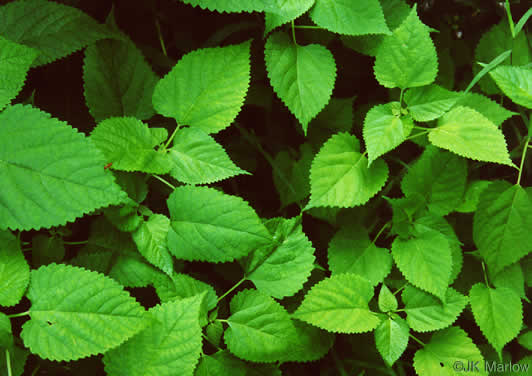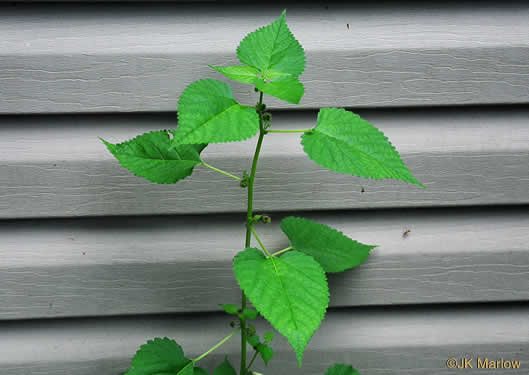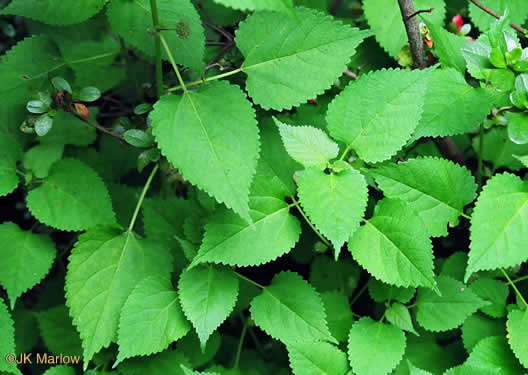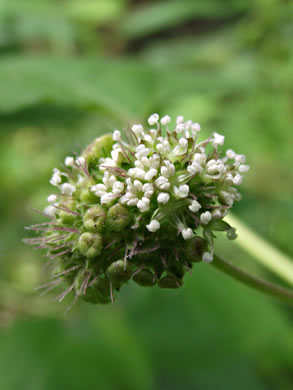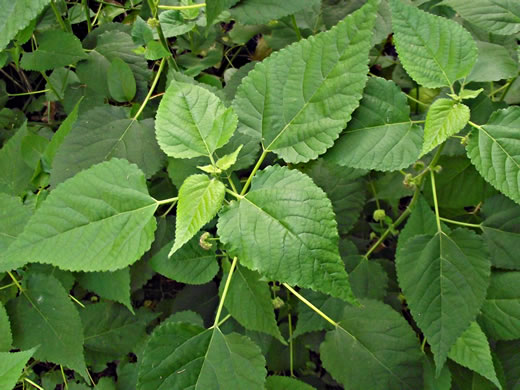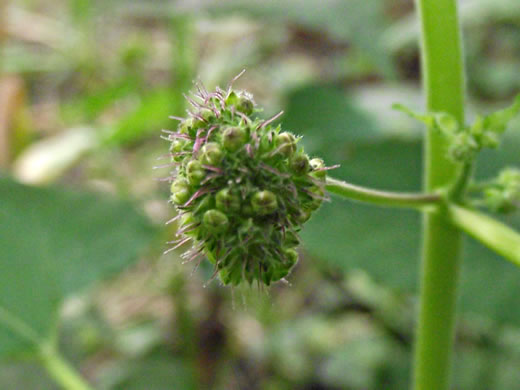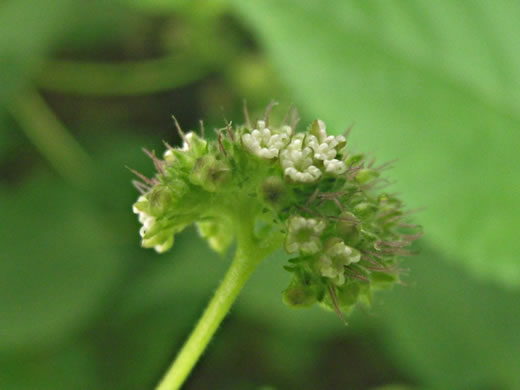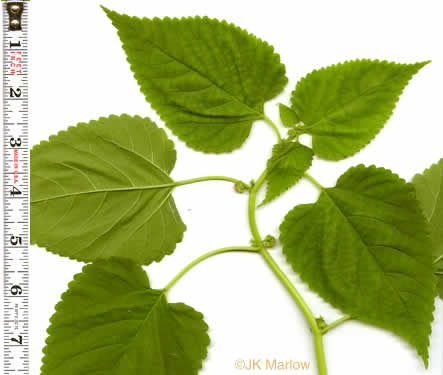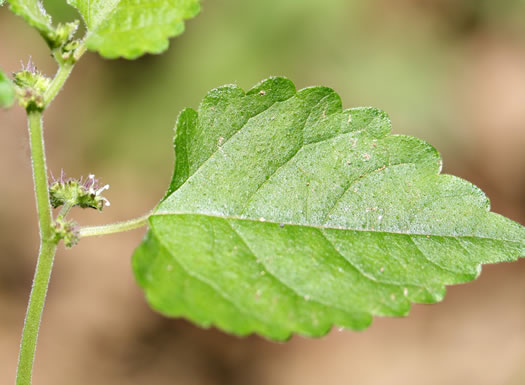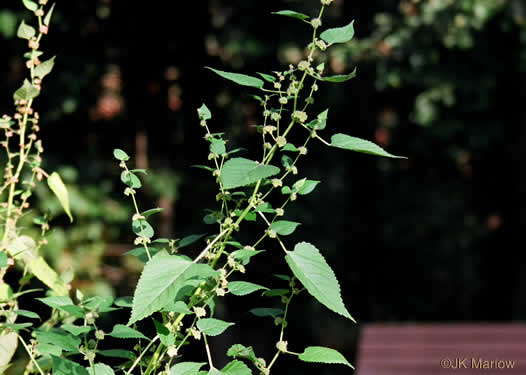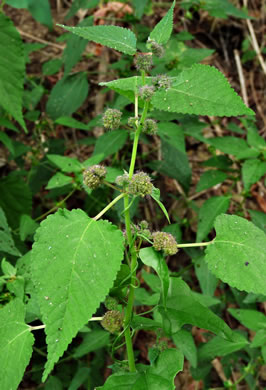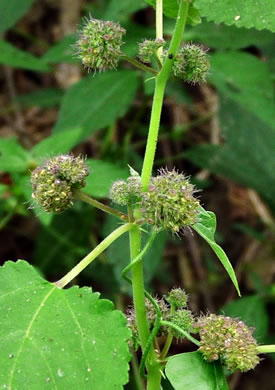Spermatophytes (seed plants): Angiosperms (flowering plants): Eudicots: Core Eudicots: Rosids: Fabids: Rosales
WEAKLEY'S FLORA OF THE SOUTHEASTERN US (4/24/22):
Fatoua villosa
FAMILY
Moraceae
Go to FSUS key
Dig deeper at SERNEC, a consortium of southeastern herbaria.
Check out EDDMapS.org to see where this has been reported.
Read more about Mulberry-weed at Vascular Plants of North Carolina.
Fatoua appears to have become a fairly aggressive weed in eastern North America. It can be expected to continue to spread, and has the potential to become noxious, per Weakley's Flora (2022)
SYNONYMOUS WITH
PLANTS NATIONAL DATABASE:
Fatoua villosa
FAMILY
Moraceae
SYNONYMOUS WITH Floristic Synthesis of North America. BONAP (Kartesz, 2021)
Fatoua villosa
SYNONYMOUS WITH Flora of North America north of Mexico, vol. 3 (1997)
Fatoua villosa
COMMON NAME:
Mulberry-weed, Crabweed, Foolish-weed
To see larger pictures, click or hover over the thumbnails.
JK Marlow jkm0407x_33
July Greenville County SC
First reported in Louisiana in early 60s. By 2004, its distribution included 28 states, per Weakley's Flora (2022).
Roxanna Martin rlm82110_33
August Spartanburg County SC
Inflorescences are dense cymes borne on peduncles in leaf axils, per Weakley's Flora (2022).
Roxanna Martin rlm8310_1
August Spartanburg County SC
Pubescence of stem and foliage is uncinulate, giving plant a "tacky" feel, per Weakley's Flora.
Roxanna Martin rlm8310_5
August Spartanburg County SC
Achenes white, oval, 3-angled, ~ 1 mm, minutely muricate, per Flora of North America.
JK Marlow s050821_a1
August Greenville County SC
Alternate, ovate leaves with cordate bases, borne on long petioles (about as long as leaf blade), per Weakley's Flora (2022).
JK Marlow jkm0509i_18
September Greenville County SC
Stems branched, light green, darkening w age, sometimes reddish-purple at base, w hooked hairs, per Wildflowers of the Atlantic Southeast (Cotterman, Waitt, & Weakley, 2019).
WEAKLEY'S FLORA OF THE SOUTHEASTERN US (4/24/22):
Fatoua villosa
FAMILY
Moraceae
SYNONYMOUS WITH
PLANTS NATIONAL DATABASE:
Fatoua villosa
FAMILY
Moraceae
SYNONYMOUS WITH
Floristic Synthesis of North America. BONAP (Kartesz, 2021)
Fatoua villosa
SYNONYMOUS WITH
Flora of North America north of Mexico, vol. 3
Fatoua villosa
If a search such as "Carex leptalea var. leptalea" doesn't deliver the results you want, try "Carex leptalea".
Or, to minimize chances of a misspelling, try just "Carex le".
Less is more: If "pencil flower" doesn't deliver the results you want, try "pencil".

